Kai・Kaibō
- 【English】
- Kai: paddle- or oar-like stirring tool
- 【Japanese】
- 櫂・櫂棒
A rod-like tool used to mix and even-out mixtures of liquids and solids in tanks. Formerly made of wood or bamboo, now epoxy resin or aluminium are the most common materials. There are also kai constructed from aluminium piping. Air can be pumped into the top end, to emerge from the bottom end to mix the moromi.
There are various shapes, depending on the particular task. The main types are as follows.
- Kabura-gai (“turnip kai”). The most common kind. A rounded head is attached to the end of the handle. Mostly used for mixing shubo and moromi.
- Bo-gai (long “o”, “stick kai”). The part used for stirring is flat like an oar, and it is used after mashing kimoto in hangiri tubs in order to mix thoroughly to the corners. This kind is also known as hera-gai (from the word for spatula).
- Oni-gai (“ogre kai”). The part that comes into contact with the mash is thick, in a shape resembling the iron clubs carried by ogres in Japanese folktales. Used after mashing kimoto and so on, particularly in cases where the mash is stiff, and it is desired to break down the rice whilst mixing.
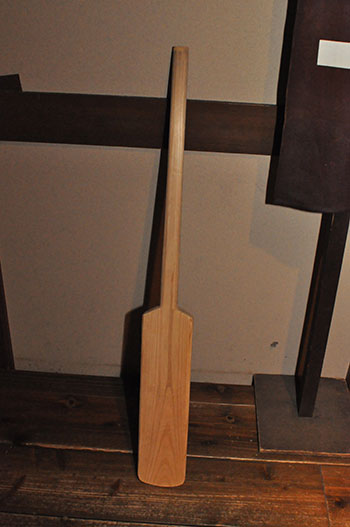
bo gai1
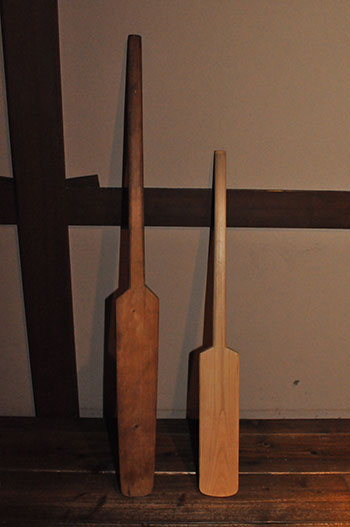
bo gai2
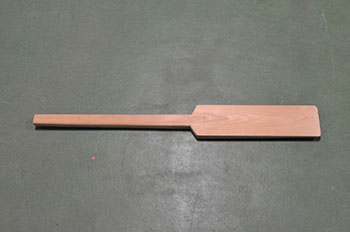
bo gai3
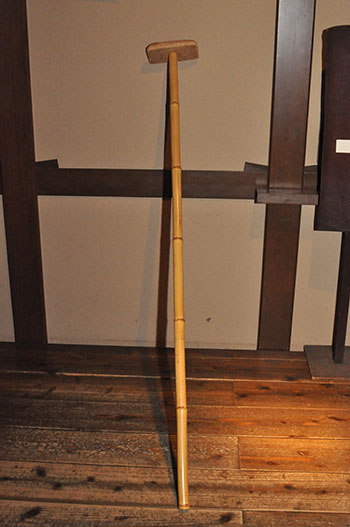
kabura gai1
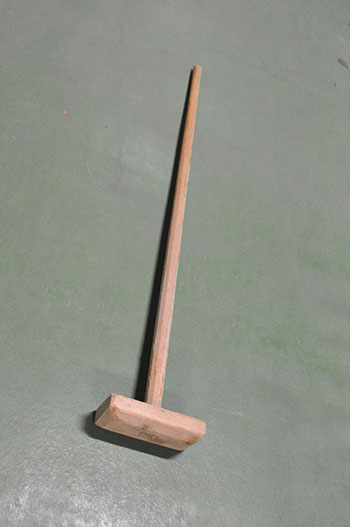
kabura gai2
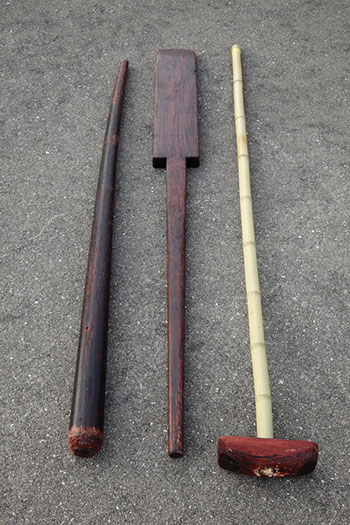
kai
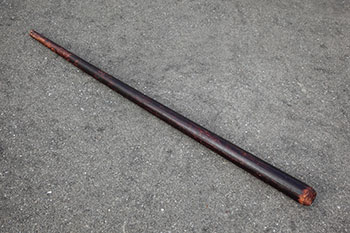
oni gai

